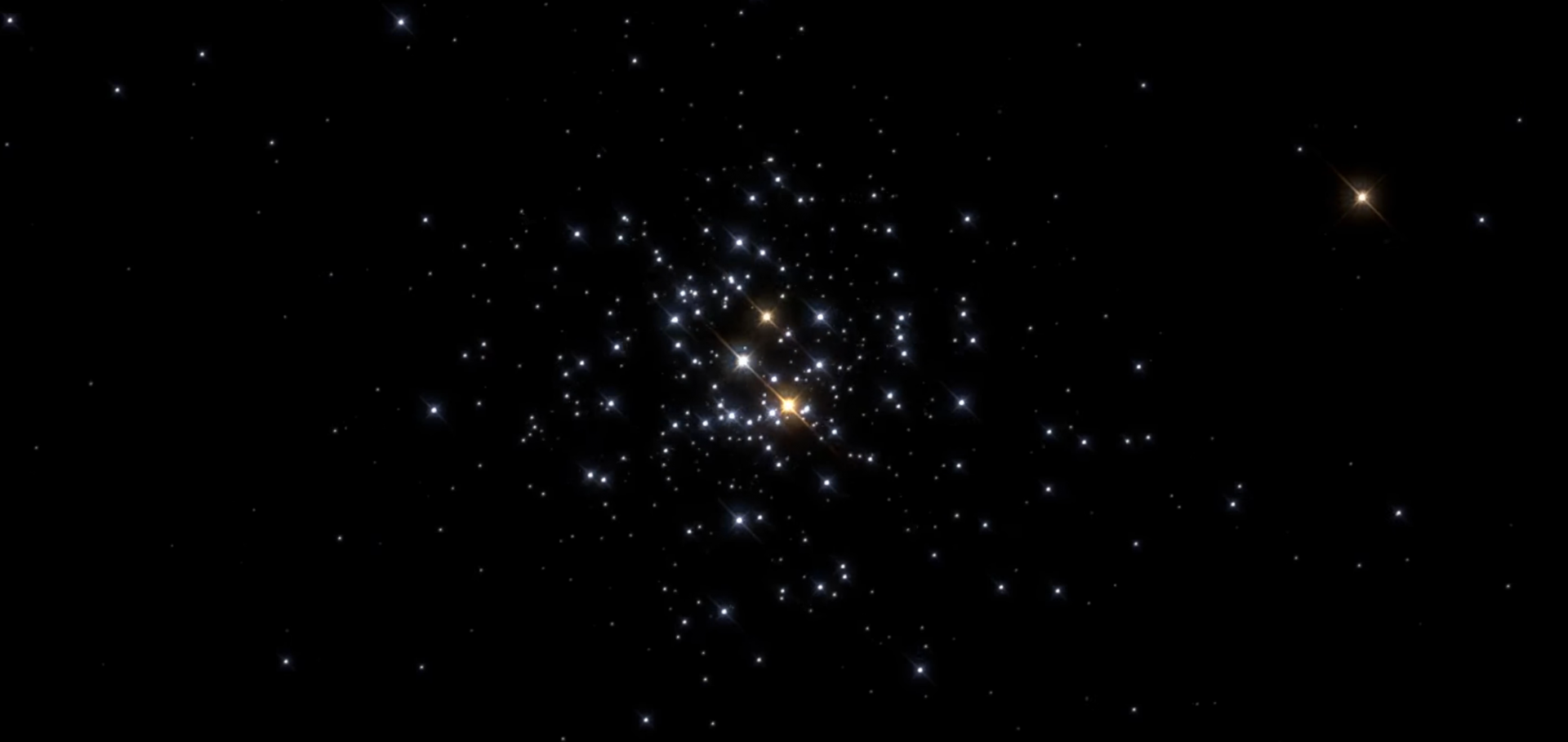Relativistic Pythagorean three-body problem
PHYSICAL REVIEW D 104:8 (2021) ARTN 083020
Gargantuan chaotic gravitational three-body systems and their irreversibility to the Planck length
Monthly Notices of the Royal Astronomical Society Oxford University Press 493:3 (2020) 3932-3937
Abstract:
Chaos is present in most stellar dynamical systems and manifests itself through the exponential growth of small perturbations. Exponential divergence drives time irreversibility and increases the entropy in the system. A numerical consequence is that integrations of the N-body problem unavoidably magnify truncation and rounding errors to macroscopic scales. Hitherto, a quantitative relation between chaos in stellar dynamical systems and the level of irreversibility remained undetermined. In this work, we study chaotic three-body systems in free fall initially using the accurate and precise N-body code Brutus, which goes beyond standard double-precision arithmetic. We demonstrate that the fraction of irreversible solutions decreases as a power law with numerical accuracy. This can be derived from the distribution of amplification factors of small initial perturbations. Applying this result to systems consisting of three massive black holes with zero total angular momentum, we conclude that up to 5 per cent of such triples would require an accuracy of smaller than the Planck length in order to produce a time-reversible solution, thus rendering them fundamentally unpredictable.Formation of massive seed black holes via collisions and accretion
Monthly Notices of the Royal Astronomical Society Oxford University Press 476:1 (2018) 366-380
Abstract:
Models aiming to explain the formation of massive black hole seeds, and in particular the direct collapse scenario, face substantial difficulties. These are rooted in rather ad hoc and fine-tuned initial conditions, such as the simultaneous requirements of extremely low metallicities and strong radiation backgrounds. Here, we explore a modification of such scenarios where a massive primordial star cluster is initially produced. Subsequent stellar collisions give rise to the formation of massive (104−105 M⊙) objects. Our calculations demonstrate that the interplay among stellar dynamics, gas accretion, and protostellar evolution is particularly relevant. Gas accretion on to the protostars enhances their radii, resulting in an enhanced collisional cross-section. We show that the fraction of collisions can increase from 0.1 to 1 per cent of the initial population to about 10 per cent when compared to gas-free models or models of protostellar clusters in the local Universe. We conclude that very massive objects can form in spite of initial fragmentation, making the first massive protostellar clusters viable candidate birth places for observed supermassive black holes.The origin of chaos in the orbit of comet 1P/Halley
Monthly Notices of the Royal Astronomical Society Oxford University Press 461:4 (2016) 3576-3584
Abstract:
According to Muñoz-Gutiérrez et al. the orbit of comet 1P/Halley is chaotic with a surprisingly small Lyapunov time-scale of order its orbital period. In this work we analyse the origin of chaos in Halley's orbit and the growth of perturbations, in order to get a better understanding of this unusually short time-scale. We perform N-body simulations to model Halley's orbit in the Solar system and measure the separation between neighbouring trajectories. To be able to interpret the numerical results, we use a semi-analytical map to demonstrate different growth modes, i.e. linear, oscillatory or exponential, and transitions between these modes. We find the Lyapunov time-scale of Halley's orbit to be of order 300 yr, which is significantly longer than previous estimates in the literature. This discrepancy could be due to the different methods used to measure the Lyapunov time-scale. A surprising result is that next to Jupiter, also encounters with Venus contribute to the exponential growth in the next 3000 yr. Finally, we note an interesting application of the sub-linear, oscillatory growth mode to an ensemble of bodies moving through the Solar system. Whereas in the absence of encounters with a third body the ensemble spreads out linearly in time, the accumulation of weak encounters can increase the lifetime of such systems due to the oscillatory behaviour.On the reliability of N-body simulations
Computational Astrophysics and Cosmology Springer Science and Business Media LLC 2:1 (2015) 2


